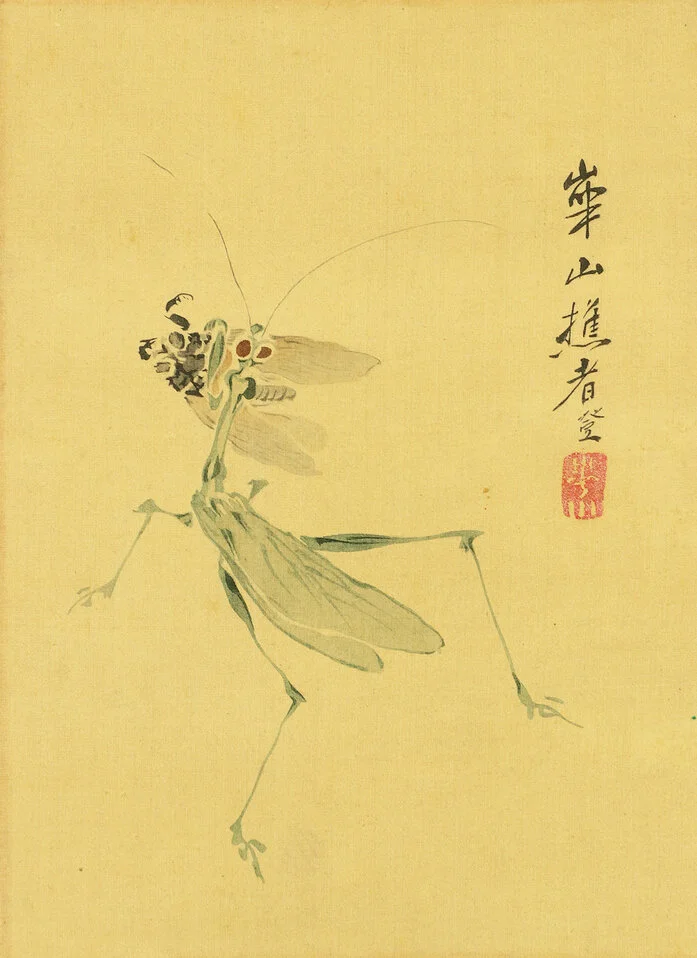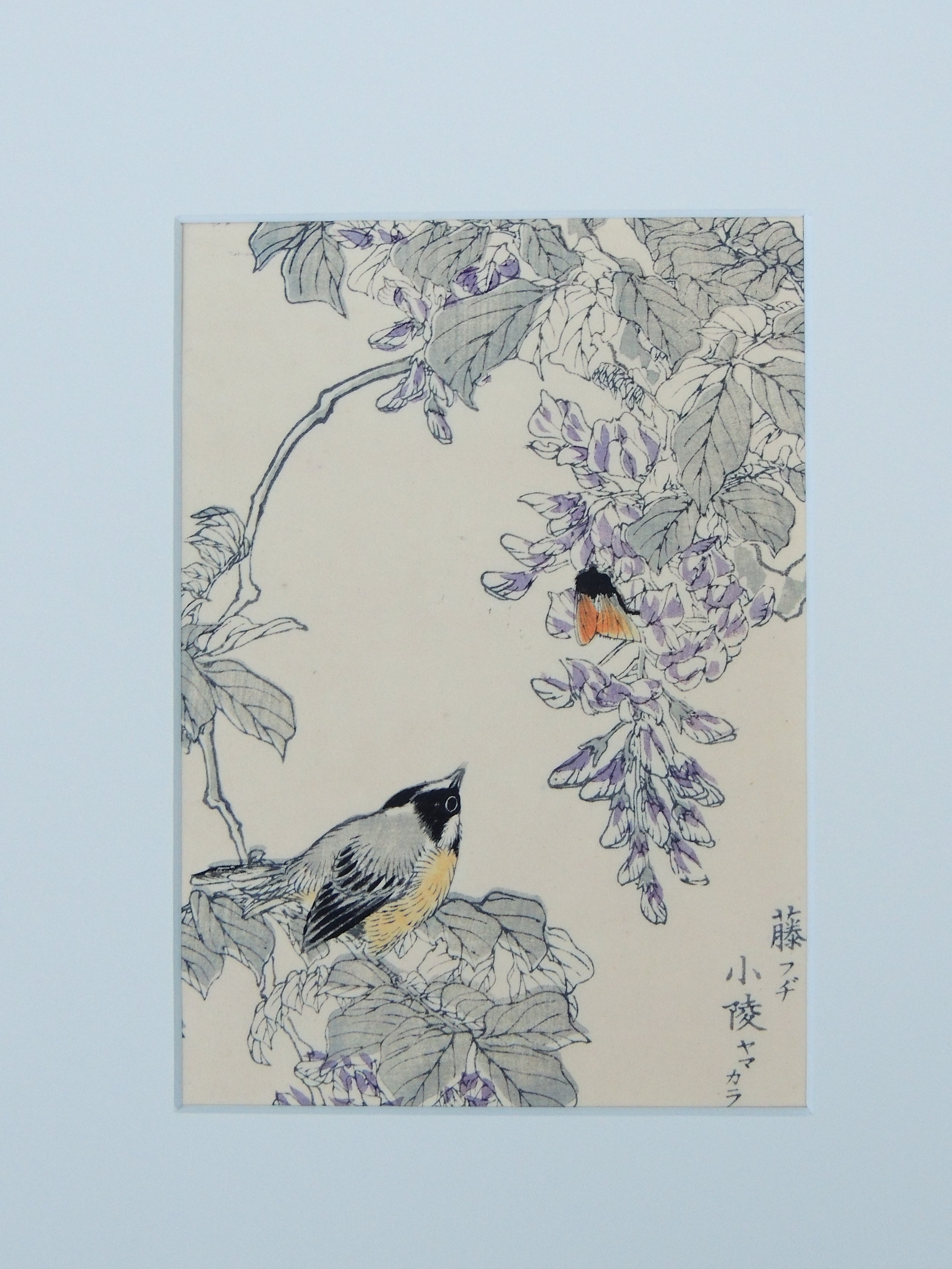Yamamoto Baiitsu
Edo / Meiji period 19/20th century
1800-1912
Painting
An ink and coloured painting on paper bordered in silk mounts and lacquered wood jikusaki (scroll ends). The painting depicts a mantis stalking crickets. The painting is done in very pale washed-out tones giving it a wonderful subtle feeling.
Signed Yamamoto Baiitsu with red seal
Scroll size 455mm x 1106mm
Painting size 294mm x 250mm







